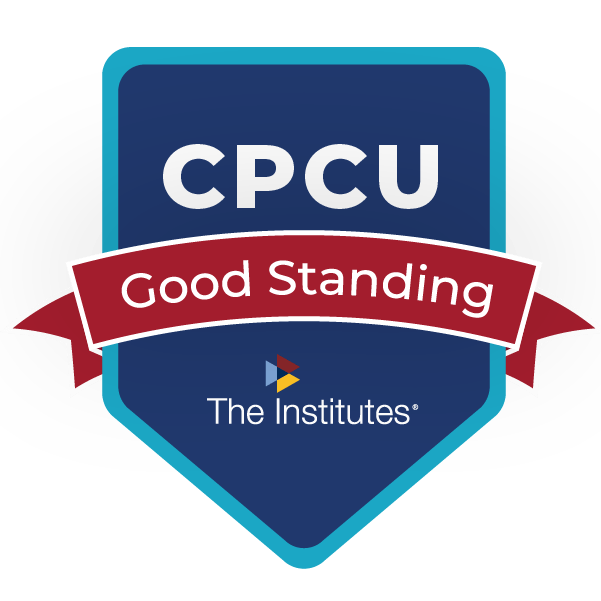Warren Buffett Talks Structured Settlements
|
Berkshire Hathaway’s 2017 Annual Meeting Excerpt Warren Buffett Knows (and Likes) Structured Settlements |
| May 22, 2017 – Earlier this month, attendees of Berkshire Hathaway, Inc.’s Annual Meeting witnessed Chairman and principal shareholder Warren Buffett respond to a question about the company’s structured settlement holdings.
You can watch the four minute excerpt of this exchange Although the respected “Sage of Omaha” steadfastly refrains from publicly making ANY personal recommendations on ANY type of investment or financial decision, those working in the personal injury litigation field can take comfort in knowing that one of history’s most successful financial investors clearly understands and appreciates the importance and value of structured settlements. In addition to explaining that Berkshire Hathaway is often a preferred choice for those entering into structured settlement arrangements due to the company’s superior financial standing, Chairman Buffett explains that structured settlements are often . . . “. . . urged by the court or urged by family members who really do have the interest of the injured party at heart.” – Warren Buffett – |
| According to Chairman Buffett, Berkshire Hathaway accepts approximately $30,000,000 worth of structured settlement annuity contracts every week ranking the company first among the competitive 5.8-billion-dollar annual structured settlement market (2016 results).
I’m proud of the fact that many of our clients, like those Mr. Buffett references, prefer Berkshire Hathaway for the structured settlements we place on their behalf. And why not? They’re an excellent choice. It’s probably safe to assume that nobody ever went broke emulating Warren Buffett’s approach to money. Long a believer in “slow and steady” winning the race, it only makes sense that he would appreciate the value of structured settlements. If structured settlements were people, they would be Warren Buffett.
Listen to your heart. Choose structured settlements. RELATED: Be sure to read “Managed or Mangled Money” to better understand the lurking risks that can sabotage the futures of those who choose to focus on the sizzle of managed funds instead of the steak of guaranteed income when making financial decisions. |
|
Thank you for the opportunity to be of service and best wishes for continued success in your personal and professional lives. (Reprinted from our May 22, 2017 Newsletter) Heart Money image courtesy of Sira Anamwong at FreeDigitalPhotos.net |
Posted: May 22, 2017 | Category: Articles, Blog, Newsletter, Structured Settlements | Comments Off on Warren Buffett Talks Structured Settlements
Managed or Mangled Money
April 20, 2017 – If you’ve had money in an actively managed large cap fund in the United States for the past five years, there’s an 88.40% chance your manager underperformed and you would have been better off in a simple, low expense S&P 500 indexed fund instead.
Would you board an airplane that only had an 11.70% chance of reaching its destination?
According to Spiva® Statistics & Reports, managers in the United States were particularly bad at coming out ahead when compared to the general market. Only in Chile were the fund managers less successful.
Remember when, nine years ago, Warren Buffett made a million-dollar bet that a simple, low cost, passively managed S&P 500 indexed fund would outperform an actively managed hedge fund? Absent something unimaginable happening over the next few months, the Berkshire Hathaway Chairman is poised to win his bet.
This report suggests Mr. Buffett knew what his odds were.
Injured Plaintiff Beware
For the past 25 years, I have helped thousands of individuals make decisions totaling hundreds of millions of dollars from $10,000 dog bite injuries to quadriplegics receiving jury verdicts and negotiated settlements totaling more than eight figures and everything in between. For most, dedicating a sizable portion of their settlement toward a structured settlement allows them and their families to move forward from their accident and live their lives with dignity and financial, if not always physical, peace of mind.
But somewhere along the way, a push from the fund management community managed to ingratiate themselves into the plaintiff bar and convinced them, the judges who approve certain settlements and plaintiffs themselves that a managed money fund (with high taxes, fees, and costs) held more promise than a structured settlement to benefit someone whose future has been compromised.
Not all settlement planners, trust attorneys and fund managers touting these managed fund options are intentionally leading their clients to a potentially more insecure future. But with data like those linked in this post, odds of a more positive outcome just don’t seem to be in their favor.
Structured settlements on the other hand, while perhaps too straightforward for some and somewhat boring by comparison, provide safety, certainty and tax advantages not easily replicated by ANY managed fund.
S&P 500 Linked Option
 Fortunately for plaintiffs anticipating personal injury proceeds, the attorneys who represent them AND those with retirement accounts wondering how to best take advantage of the market upswings without the downside risk, there are annuity options available with a market component. A shield, if you will, against market loss.
Fortunately for plaintiffs anticipating personal injury proceeds, the attorneys who represent them AND those with retirement accounts wondering how to best take advantage of the market upswings without the downside risk, there are annuity options available with a market component. A shield, if you will, against market loss.
Fixed Indexed Annuities are available in most states for those with savings and retirement accounts which allow them to invest their money which increases, subject to a cap, when a chosen index increases yet remains neutral when the market declines before ultimately converting it to cash flow they can never outlive.
For those anticipating personal injury settlement proceeds and the contingency fee-based attorneys who represent them, such an option exists with even more distinct tax advantages. Pacific Life introduced its Index-Linked Annuity Payment Adjustment Rider (ILAPA) for those settling injury claims three years ago and it continues to grow in popularity as the market performs well and familiarity increases. All future income is 100% tax-free to the plaintiff while any structured attorney fees are tax-deferred if established properly.
I’m sure there is contrarian data one could point to saying all this research is flawed and actively managed funds do perform better than the attached report suggest. But you know what? I’m not willing to bet too much of my own money on it given these poor odds.
If your injury settlement money or retirement savings represents everything you’re relying on for your future, common sense suggests not taking risks you can’t afford to take and you, too, would be wise to weigh your options carefully. For most, a balanced approach will yield (pun intended) the best outcome.
Image courtesy of Sira Anamwong at FreeDigitalPhotos.net
Posted: April 20, 2017 | Category: Articles, Blog, Retirement, Structured Settlements | Comments Off on Managed or Mangled Money
California DOI Press Release on Annuities
April 18, 2017 – Earlier this month during National Retirement Planning Week, the California Department of Insurance issued a Press Release urging Californians to “plan for retirement and carefully consider annuities.”
This statement serves as a timely reminder that annuities offer many benefits that simply cannot be matched by traditional retirement investing approaches and often go overlooked by those who continue to focus on asset accumulation in the years leading up to and during retirement.
The newsworthy announcement includes some excellent information and links, including cautions and warnings, designed to help people understand the law and to make the most informed decisions possible about their own financial futures.
Pensions, once a staple of retirement income security for the American workforce, have all but disappeared completely over the past few decades forcing workers to rely on their own skills to ensure they don’t run out of money once their working years come to an end.
Left to their own devices, most people fail to appreciate the statistical probability that any retirement funds they’re able to successfully accumulate during their working life could become fully depleted before they die leaving them dependent upon others for care.
Only annuities can provide guaranteed income for life.
Period!
Annuity guarantees are subject to the financial strength of the life company, naturally, but because life companies pool the mortality risk of large numbers of people, they’re able to help individuals achieve the goal of lifetime income in a fashion that somebody relying on traditional investing methods cannot.
 Retirement income planning doesn’t happen by itself and it’s not a particularly fun exercise. But it’s a necessary step for those seeking to make the transition from working to the next phase of life and can be made much easier by dedicating some portion of their portfolio toward life income annuities.
Retirement income planning doesn’t happen by itself and it’s not a particularly fun exercise. But it’s a necessary step for those seeking to make the transition from working to the next phase of life and can be made much easier by dedicating some portion of their portfolio toward life income annuities.
And sooner is usually better than later.
Just like any purchase, consumers need to educate themselves on the pros and cons of ANY type of retirement income strategy and this California Department of Insurance press release is a good first stop.
We invite you to also check out the rest of our Retirement Income Blog for additional educational information and hope it helps you with your planning.
Image courtesy of Stuart Miles at FreeDigitalPhotos.net
Posted: April 18, 2017 | Category: Articles, Blog, Retirement | Comments Off on California DOI Press Release on Annuities
Just Published: “A Good Fit”
February 16, 2017 – Proud to announce the recent publication of “A Good Fit,” an article I co-authored for Workers’ Compensation (WC), a quarterly periodical of CLM Publishing.
Subtitled “Structured settlements and MSA arrangements are complementary claims resolution tools,” the article highlights the laws surrounding the Medicare Secondary Payer Act and gives examples of how and why structured settlements perfectly complement the resolution of claims requiring Medicare Set Aside allocations.
Billing itself as “the largest professional association in the insurance industry with a membership of more than 35,000 professionals in the claims resolution and litigation management industries,” the CLM serves as an excellent resource for the insurance leadership community as well and the claims and litigation staffs and consultants who serve them.
Worth mentioning: While this article focuses on the benefits of combining structured settlements with MSAs when resolving workers’ compensation claims, the same concept can apply when settling liability claims even though MSAs have yet to be fully embraced by the liability claims resolution community.
I hope you enjoy the article and look forward to answering any questions you have on the topic going forward.
Posted: February 16, 2017 | Category: Articles, Blog, Structured Settlements | Comments Off on Just Published: “A Good Fit”
With Friends Like These . . .
January 23, 2017 – As a post-settlement income planning specialist for more than 25 years, I have countless examples of situations where clients anticipating large sums of money improved their lives greatly by choosing to allocate some of their settlement proceeds toward a structured settlement arrangement.
If properly implemented, structured settlements pay future income that is 100% tax-free (if for a physical injury) or tax-deferred (if for certain nonphysical injuries), management fee-free and come with guarantees from companies boasting some of the best balance sheets in the financial services industry.
What’s not to like about safe, secure, tax-advantaged guaranteed income?
But while structured settlements have helped secure the futures of thousands of people over the past 40 years (and are still going strong despite the financial roller coaster ride many experienced during the past decade), sometimes people just decide cash is a better option. Often their reasoning is sound and they have better perceived uses for their settlement dollars.
But of all the reasons people give for rejecting a structured settlement option, there’s one that always makes me cringe:
“I have a friend who will help me manage my money.”
. . . Who Needs Enemies?
 Sometimes clients really do have knowledgeable friends who can provide valuable advice.
Sometimes clients really do have knowledgeable friends who can provide valuable advice.
But history is littered with stories of “friends” who end up going full-scale Bernie Madoff with other people’s money leaving hard lessons about trust and friendship in their wake.
Take last week’s story in the Orange County Register headlined “Woman gets year in jail for scamming investors, church members out of millions.”
Ever notice how some of best con artists notoriously hide in plain sight infiltrating organizations where people often feel most safe?
Because trust is exchanged so naturally where people with shared values, backgrounds and interests congregate (churches, country clubs, family reunions, alumni associations, Internet chat rooms, etc.), many never suspect the underlying nefarious motives of those seeking to do them harm.
When I read this story, I was reminded of a case I once worked on where Anthony (not his real name), a 19-year-old paraplegic with very specific future income needs who would have been well-served by a structured settlement, took his entire $1,900,000 recovery in cash because his mom said they had “friends at the church who cared about him” and had pledged to help.
Neither the church nor the “friends” were identified and I don’t know whatever became of Anthony. But I sure hope he wasn’t connected with the same church as these other victims listed in the Register article or one similar.
(NOTE: One of the victims mentioned was “a family friend who received money after suffering a personal injury,”)
Even in the best situations where people do have their funds properly managed, the impact of management fees, taxes and expenses often offset the value of any additional advantage clients seek to gain by investing themselves versus structuring part of their injury settlement recovery.
But trusting one’s future to “friends,” who often start showing up just about the time settlement negotiations are coming to an end, is a high-risk proposition that everybody is cautioned to be on guard against.
Like most things in life, a balanced approach to post-settlement injury income planning usually makes the most sense and leads to the optimum outcome.
That’s what a real friend would tell you anyway.
Posted: January 23, 2017 | Category: Articles, Blog, Structured Settlements | Comments Off on With Friends Like These . . .
The S&P 500 by Presidents
January 20, 2017 – On Inauguration Day, here’s a little financial food for thought as you contemplate your own financial future and the decisions you’ll be making over the next few years.
Twelve of the last fourteen presidents served at least one full term in office (Kennedy and Ford did not).
As measured purely by the S&P 500 returns during each’s first full term in office, which presidents were the most and least economically successful?
Give up?
Here they are ranked with the percentage return from Inauguration Day to Inauguration Day shown in parentheses:
Roosevelt (206.3%)
Obama (81.4%)
Clinton (79.2%)
Eisenhower (69.5%)
George H.W. Bush (47.5%)
Reagan (38.7%)
Johnson (28.4%)
Carter (27.0%)
Nixon (12.6%)
Truman (-0.7%)
George W. Bush (-13.5%)
Hoover (-77.1%)
There are many more ways to measure economic success than the S&P 500 and, to be fair, there’s a lot more driving the engine than simply who happens to be sitting in the Oval Office when economic activity occurs.
But it’s interesting to look back, with the benefit of hindsight, to see how the market responded to different administrations.
More Financial Food
When you consider that during 27 out of the last 88 years (31%), the S&P 500 has yielded a negative annualized return, it’s worth considering where you are in life so you can choose the appropriate risk profile for your own unique situation.
Are you in your 20s or early 30s? Go ahead. Stick some money in the stock market, ride out the highs and lows for 20-40 years and you will probably be rewarded.
But if you’re within 10 years of retirement, banking your entire future on the market can lead to untold misery if your timing happens to be bad or you are living during one of the down year presidential terms.
Nobody has a crystal ball but a sensible retirement or post-settlement income strategy includes locking up some of your future with guaranteed income that fixed income or structured settlement annuities provide.
Some years are up. Some years are down. Choosing a slower, steadier upward path might not be terribly exciting. But the predictability that comes with fixed annuities can certainly make your life less stressful.

Posted: January 20, 2017 | Category: Articles, Blog, Retirement, Structured Settlements | Comments Off on The S&P 500 by Presidents
Outliving Your Retirement
August 23, 2016 – They call it “The Longevity Paradox” – People recognize they’re living longer but don’t seem to be taking the necessary steps to ensure long life financial security.
A few staggering facts from yesterday’s InvestmentNews article of the same name:
There are 44% more American centenarians today (77,197) than there were a decade ago.
That number is expected to grow to more than a million by 2050.
Remember when people living to age 100 was so rare it used to make the newspapers? (Heck, remember newspapers?)
Increased longevity probability is good news for those who are healthy and have the resources to enjoy their long life. But too many don’t or won’t for a variety of reasons.
Managing one’s longevity risk while simultaneously matching financial assets needed to meet uncertain and often-changing future needs is an impossible task at best.
Make Mine Insurance, Please
Fortunately, life insurance companies are in the business of managing large scale mortality risk and efficiently matching future dollars to the future needs of those who live long lives.
They can do for you what is nearly impossible for you to do on your own:
Guarantee income for life!
Here’s a nice little six minute video from WealthTrack featuring New York Life’s Chris Blunt and Kiplinger’s Personal Finance‘s Kim Lankford making the point far more eloquently than I could.
Annuities are like gravity. They work whether you believe in them or not.
About a year ago, we told you about a working paper which did an excellent job comparing and contrasting retirement income strategies. Here’s the link if you missed it the first time. Worth revisiting.
 So if you need your retirement tree to provide enough cash to last your entire lifetime, a life annuity is your best choice.
So if you need your retirement tree to provide enough cash to last your entire lifetime, a life annuity is your best choice.
By the way, balance is the key. Only rarely does it make sense to put all your retirement funds into an annuity basket. Likewise, only rarely does it make sense to NEVER put any of your retirement funds into an annuity.
Just make sure you sprinkle at least some annuity fertilizer on your retirement tree to ensure a healthy retirement.
L’chaim!
Posted: August 23, 2016 | Category: Articles, Blog, Retirement | Comments Off on Outliving Your Retirement
Major Milestone Surpassed
July 29, 2016 – In March of 2009, in the depths of the Great Recession, I launched the Finn Financial Group with a pledge to help clients achieve maximum financial success and security through the effective use of structured settlements and related specialty products and services.
Pretty dumb of me, right? I mean, who starts any kind of financial business when the financial world is collapsing?
But it is precisely because people lost fortunes that I knew a market would always exist for individuals desiring to incorporate guaranteed future income for themselves and their loved ones into their overall financial planning strategy.
Since that time, our firm has helped hundreds of people in dozens of ways but recently, we eclipsed a major milestone that really humbles us:
$100,000,000.00
That’s how many dollars worth of structured settlement and guaranteed income annuity contracts we’ve placed since our firm’s founding seven short years ago.
While the total dollars is indeed substantial, it’s what these dollars represent that matters most:
They represent financial security for children whose parents were killed in automobile accidents.
They represent college funding and future scar revision for children bitten by a dog or hit by a car.
They represent a safety net for someone injured on the job who can no longer work.
They represent restored dignity for someone released from prison for a crime they did not commit.
They represent common sense tax deferral for someone selling a business or investment property.
They represent retirement income for attorneys who often are so busy they fail to address their own future post-career security needs.
They represent peace of mind for soon-to-be retirees who choose to dedicate a portion of their retirement funds to guaranteed cash flow they can never outlive.
One hundred million dollars worth of trust and confidence from hundreds of clients across the country reassures me that I made the right choice when founding this firm.
I’m proud of the role I’ve played in helping people secure their futures, many of whom will continue benefiting from the plans we worked out together long after I’m gone.
So, to all our clients whose demonstrated trust enables us to continue our mission of helping people who require knowledgeable guidance when they are making some of the most important decisions of their lives we extend a heartfelt
“THANK YOU” for the opportunity to be of service!
Posted: July 29, 2016 | Category: Articles, Blog, Retirement, Structured Settlements | Comments Off on Major Milestone Surpassed
Just Published: Nonphysical Injury Structured Settlements Article
July 18, 2016 – This brief post exists simply to call your attention to my most recently published article:
“Understanding Nonphysical Injury Structured Settlements”
I developed the article for Claims Management, a publication of the Claims & Litigation Management Alliance, for the benefit of my fellow CLM Fellows. (That was NOT a typo. I am a CLM Fellow!)
The article is based on my peer-reviewed research paper written in fulfillment of requirements necessary to obtain my Master Structured Settlement Consultant designation which I was awarded last year by the National Structured Settlements Trade Association in cooperation with the University of Notre Dame.
I hope you enjoy the article and find it helpful to you in your practice. If you have any questions or I can be of service to you on any claims, lawsuits or verdicts involving nonphysical injury damages, please don’t hesitate to contact me.
BONUS FOR CALIFORNIA ATTORNEYS:
If your firm, organization, convention or bar association chapter is interested in learning more about this topic, be sure to ask about our MCLE-approved Taxable Damage Structured Settlements seminar which can be tailored to the audience and brought to your location at no cost. We’re happy to do this as a service to the legal community.
 Meanwhile, remember the old saying . . .
Meanwhile, remember the old saying . . .
“Everybody must pay taxes but there’s no law that says you gotta leave a tip.”
Posted: July 18, 2016 | Category: Articles, Blog, Structured Settlements | Comments Off on Just Published: Nonphysical Injury Structured Settlements Article
Brexit, Stage Left
June 28, 2016– Financial markets like predictability. So when voters in the United Kingdom decided to pull a Snagglepuss by telling the European Union they were going it alone, the financial markets reacted accordingly.
They went barking mad, as it were. 
With the pound sinking to its lowest level against the dollar in more than three decades and the Dow Jones Industrial Average (DJIA) losing 900 points in the first two days of trading, we’re surely a long way from predictability.
But like every calamity before this one since the beginning of time, calm will some day return leaving more than a few winners and losers in its wake.
Meanwhile, those whose fortunes rely on the direction of marketable securities better stock up (pun intended) on Pepto-Bismol. You’re going to need it even if the market eases up as it has a bit today.
Until then, some answers to questions that may be on your mind.
Are my structured settlements safe?
Yes. Safety and security are hallmarks of structured settlements. Benefits will be paid on time as scheduled. Nothing to worry about.
Won’t the stock market impact my structured settlement payments?
Unless your contract includes a future payments rider linked to a market index, such as Pacific Life’s Indexed-Linked Annuity Payment Adjustment Rider, your benefits will not change. If your contract does contain such a rider, Brexit will not cause your payments to drop.
What about the cash I set aside?
It depends on what you’re invested in. When settling an injury claim, many people hold back some cash in hopes they can “do better” than the structured settlement options they’re presented with. But the higher returns they seek aren’t possible without assuming a higher degree of risk.
If you invested in stocks, conventional wisdom says you’ll probably do OK if you don’t panic and have enough time to ride out the volatility. Meanwhile, ignore that grumbling in your stomach.
I’m an attorney and recently structured my fees. Should I worry?
Not because of Brexit, that’s for sure. In fact, you’ll probably win bragging rights around the bar association table since the effective rate of return for the structure you chose likely dwarfed anything the market could have done for you anyway. Minus the market risk!
Depending on assumptions about present and future tax brackets, some of our clients estimate they “earned” effective rates of return in excess of 10% because of the tax deferral. You made a very smart move.
Is it too late to get an annuity?
No. While structured settlement annuities must be chosen before the settlement concludes, a variety of others annuities are available for direct purchase. So if you’ve already taken some of your settlement in cash and are having second thoughts about investing on your own, an income annuity might be a good choice.
Cheerio!
So, mates, best of British to you ignoring those collywobbles until the markets are hunky-dory once again.
Posted: June 28, 2016 | Category: Articles, Blog, Retirement, Structured Settlements | Comments Off on Brexit, Stage Left

 When it comes to making decisions about personal injury settlement proceeds, structured settlements might not stand out as the shiniest toy in the store. But anyone seeking the best, safest and most durable option when settling a personal injury claim would be hard pressed to find anything better.
When it comes to making decisions about personal injury settlement proceeds, structured settlements might not stand out as the shiniest toy in the store. But anyone seeking the best, safest and most durable option when settling a personal injury claim would be hard pressed to find anything better.


















